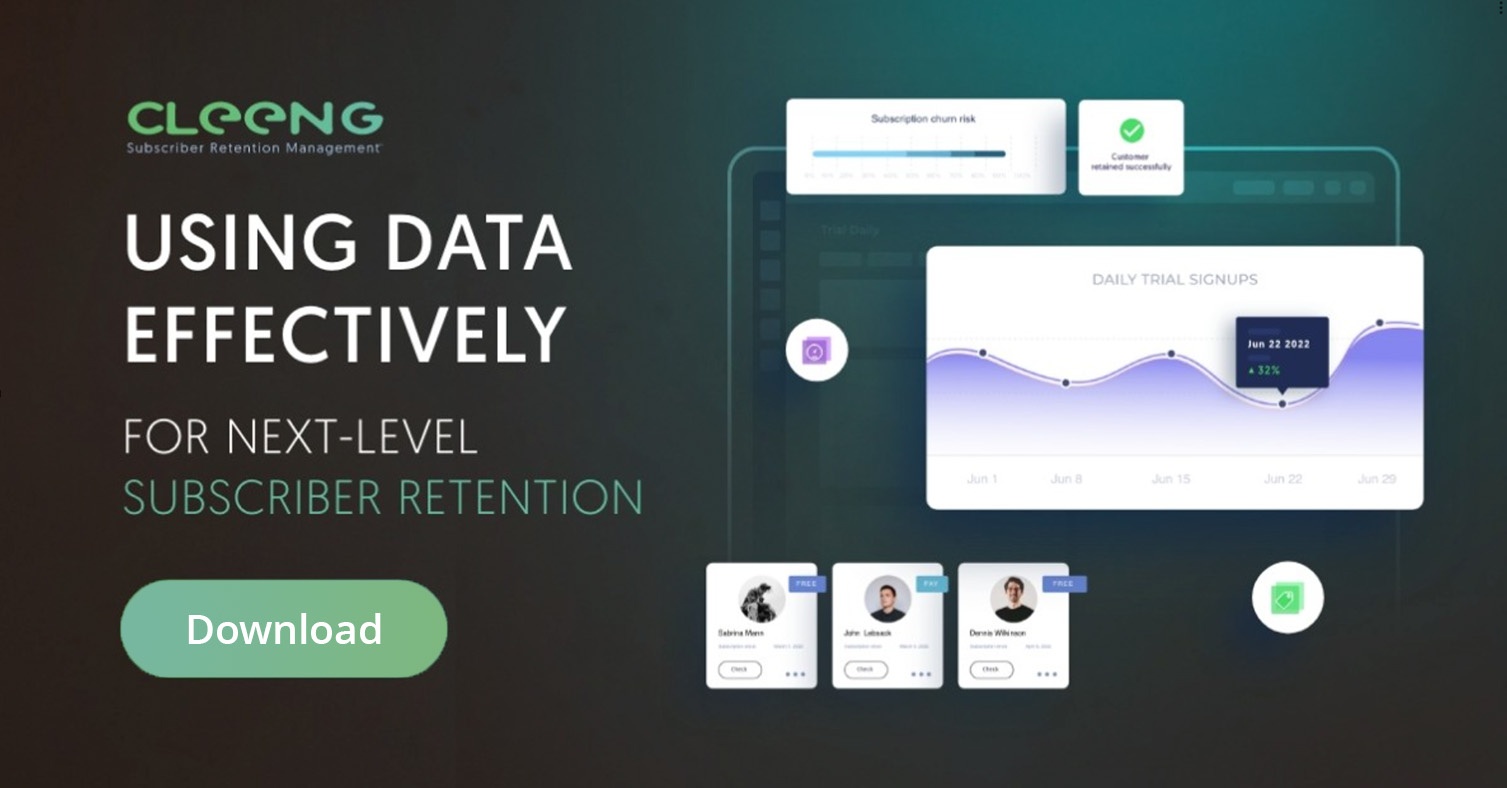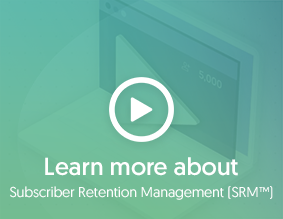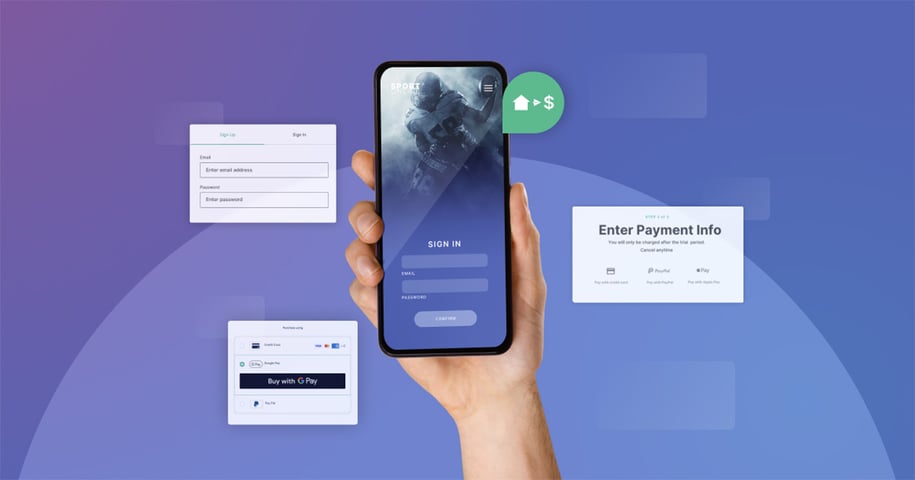
Besides captivating your viewers with high-value content, the key to growing your OTT company is removing friction through the different customer journey stages.
And unless users feel a sense of familiarity, reassurance, and security, they’ll likely drop out of your funnel and negatively impact your acquisition, retention, and profitability.
With that in mind, how optimized is the experience you provide your subscribers and prospective subscribers on mobile?
I’m asking because:
- Mobile devices account for most of the web traffic.
- 68% of consumers in the US say they watch digital content from their smartphone, followed by Smart TV (61%), laptops (43%) and tablets (36%).
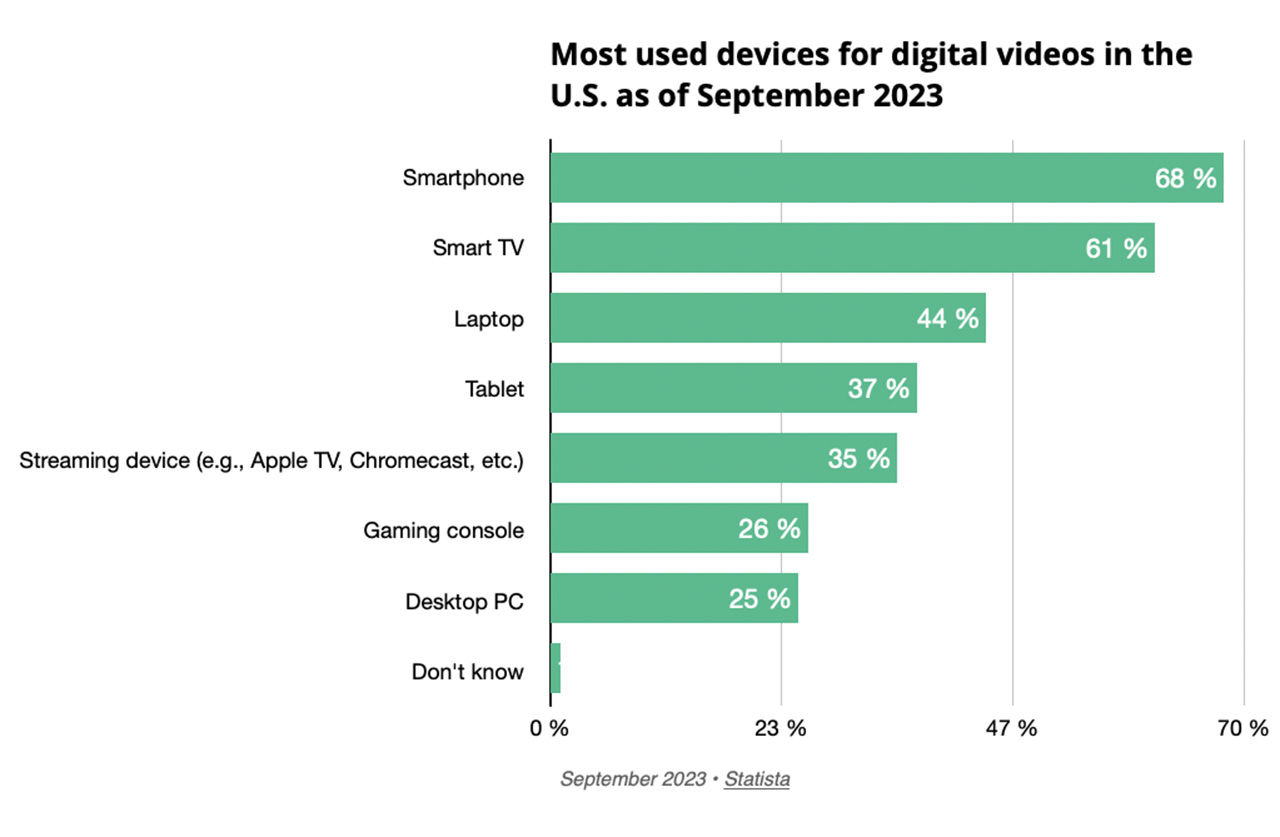
It means that only OTT platforms and services able to deliver a pristine mobile experience will be able to compete for precious market shares from now on, starting with mobile checkout optimization.
Nearly 8 in 10 mobile users churn at payment
If we go by industry data, most eCommerce users churn while making mobile payments.
According to an Oberlo survey conducted in 2023, the churn rate is around 57.95% on desktop, 62.42% on tablet devices, and 76.56% on mobile devices.
On the other hand, the numbers from Statista reveal cart abandonment rates of 77% on desktop, 82% on tablet, and 86% on tablet devices.
In other words, although numbers vary slightly from one study to another, mobile always tops the list as the mode of use with the highest cart abandonment rates.
What causes this?
Top Shopping Cart Abandonment Rate Reasons
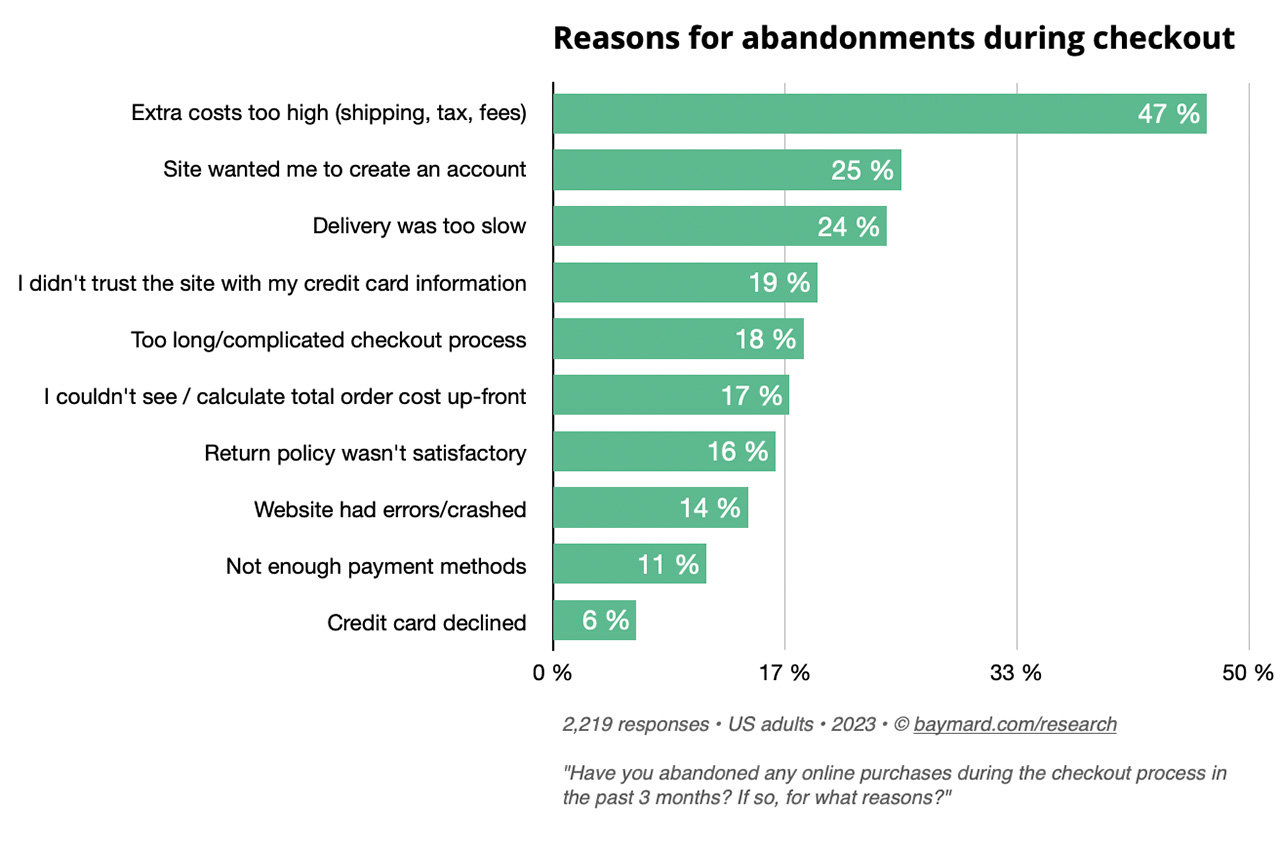
According to the 2023 Baymard cart abandonment statistics, most users tend to abandon their shopping carts because of factors like extra costs due to taxes or delivery fees (47%), followed by the need to create an account (25%).
However, it's interesting to note that a good proportion also cite reasons like not trusting the site with card details (19%), facing complicated checkout flow (18%) to the lack of favorable payment methods (11%), or being victim of credit card declines (6%).
While it's true that this is generic industry data and not specific to the intricacies of video eCommerce, there's still a clear underlying trend: Most cart abandonment reasons boil down to security, performance, the overall process, and payment options.
What action points does this mean for you as a broadcaster?
Include the most used mobile payment solutions
First, you must ensure you provide users with various trustworthy payment options.
These must include universally and locally popular payment methods (those relevant to your specific target markets):
- Bank transfers: Bank transfers are popular in many European countries—for example, SEPA direct debit or SOFORT in the Eurozone.
- Mobile applications: applications like Bancontact.
- E-wallets: E-wallets, such as Apple Pay, Google Pay, PayPal, Alipay, WeChat Pay, or Boku
- Credit and debit cards: Credit and debit cards
- Prepaid cards
Suggested Read: Providing local payment methods can boost OTT revenue. Here's why.
While embedding so many payment options at your OTT subscription checkout may seem complicated, it really isn’t if you implement the right tech.
Meet Merchant, the ideal mobile checkout process for OTT streaming companies
Merchant is a specialized payment & checkout solution for OTT broadcasters.
The Merchant API empowers broadcasters to offer as many as 186 payment options in different currencies and a multi-lingual checkout experience.
It supports 18 languages, and by using it, you can enable your subscribers to pay the way they want with methods they know and trust. Building trust is all the more important for mobile shopping as
Furthermore, Merchant's Webstore SDK supports 1-click registration and payments, making it easy for subscribers to pay. This is alongside letting you process millions of secure transactions with seamless customer experience every time.
Using Merchant, you can benefit from:
- Increased sales and mobile conversion rates as having an integrated payment service provider (PSP) dampens the frequency and severity of credit card fraud.
- Higher user trust from secure and encrypted user data
- Familiarity and reduced resistance to entering credit card details
- User-friendly access without pushing too many pop-ups and new pages.
And that's not all.
There’s more to it for broadcasters.
Tide through taxes and compliances easily
Taxation and compliance are a tricky area. Each region has its own specificities: much variation across regions:
- In the United States, taxes vary across states,
- In South Africa, companies must account for VAT on sales to businesses and consumers.
- Japan, on the other hand, requires payment of the Japanese Consumption Tax on business-to-consumer sales, where business sales comprise only those with a contract.
You get the idea.
Merchant's dynamic checkout engine simplifies all of this by adapting to the customer's local tax regulations. This ensures the correct application of taxes at the point of purchase, without you having to micromanage the process, and it gives OTT teams the possibility to provide prospective subscribers with a transparent experience.
Freedom from payment-related liabilities
Handling all of the financial and legal affairs from international payments can prove more complex than tax management. It may include compiling payment reports from different payment methods, adapting taxation to regions and discount levels, and so on.
Cleeng also provides the option to transfer all of this entirely by acting as a Merchant of Record(MoR). In other words, you can delegate complete responsibility for your payments and their associated liabilities, restricting your role to only ensuring you're paid.
Here's an example of how it can help you:
Suppose a subscriber applies for any promotions or coupons during checkout. Then, your backend must also ensure that the tax fee automatically updates along with the cart value.
Simply integrating a PSP will not take care of the entire sequence.
Now, if there is also a different country’s tax to include in the mix, things can quickly get complex!
This is where a MoR comes in handy as it would become your compliance coordinator.
It will be its job to contract directly with your PSP to fulfill all compliance requests. It will also eliminate the tedious process of sorting through fees—taxes, revenues, refunds, and surcharges—by consolidating reports from different payment service providers.
Choose your mobile payment provider wisely to grow your OTT business
There’s no growth without optimized experiences on mobile.
Growing in today's competitive landscape requires getting granular and optimizing every step of the subscriber journey.
In this sequence, offering tailored checkout options is a critical step you cannot go wrong with if you want to boost ROI.
With mobile being the main platform for consuming video content, you must build a failproof funnel for mobile shoppers and users. And that starts with deploying a robust mobile checkout experience.
In turn, this would unlock more time for your OTT team to focus on value-added tasks such as targeted campaigns to increase retention among at-risk subscribers.
Learn more about Merchant, or contact our expert team to discuss how Cleeng could support your OTT business’ growth.

